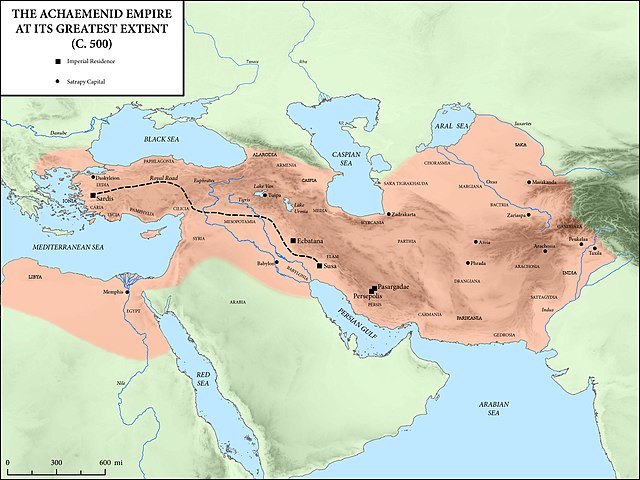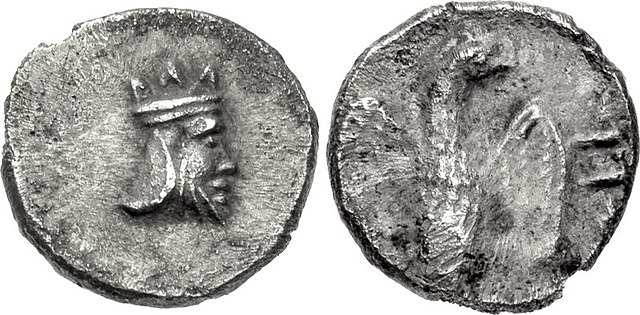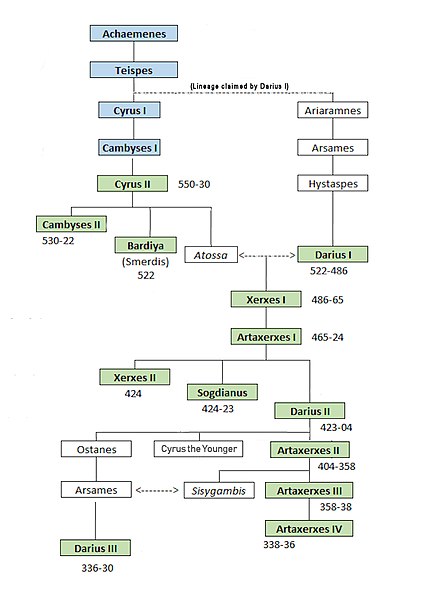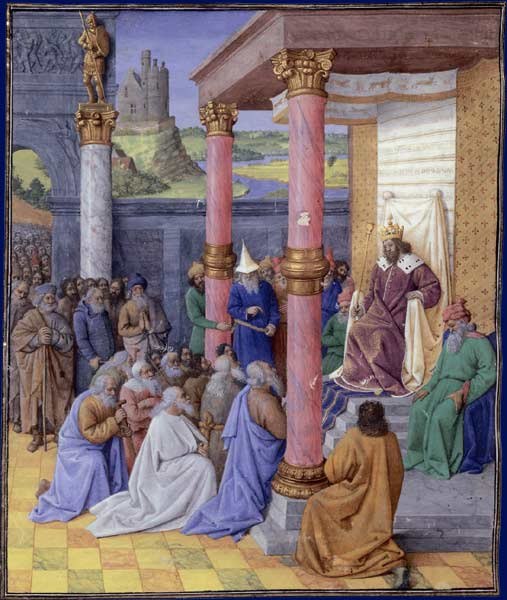Yehud Medinata, also called Yehud Medinta or simply Yehud, was an autonomous administrative division of the Achaemenid Persian Empire. It constituted a part of Eber-Nari and was bounded by Arabia to the south, lying along the frontier of the two satrapies. Spanning most of Judea—from the Shephelah in the west to the Dead Sea in the east—it was one of several Persian provinces in Palestine, together with Moab, Ammon, Gilead, Samaria, Ashdod, and Idumea, among others. It existed for just over two centuries before the Greek conquest of Persia resulted in it being incorporated into the Hellenistic empires.
The Achaemenid Empire at its greatest extent, including the province of Yehud.
Silver coin (gerah) minted in the Persian province of Yehud, dated c. 375–332 BCE. Obv: Bearded head wearing crown, possibly representing the Persian Great King. Rev: Falcon facing, head right, with wings spread; Paleo-Hebrew YHD to right.
Coins bearing the inscription YHD, or Yehud. The coin at top shows the god YHWH, the coin at bottom right has an image of the owl of Athena (Athenian coinage was the standard for Mediterranean trade).
Coin of Hezekiah, Satrap of Judaea, Achaemenid period. Circa 375–333 BCE.
The Achaemenid Empire or Achaemenian Empire, also known as the First Persian Empire, was the ancient Iranian empire founded by Cyrus the Great of the Achaemenid dynasty in 550 BC. Based in modern-day Iran, it was the largest empire by that point in history, spanning a total of 5.5 million square kilometres. The empire spanned from the Balkans and Egypt in the west, West Asia as the base, the majority of Central Asia to the northeast, and the Indus Valley to the southeast.
The Achaemenid Empire at its greatest territorial extent, under the rule of Darius the Great (522–486 BC)
Family tree of the Achaemenid rulers.
The Bible recounts Cyrus's liberation of the Israelites held captive in Babylon, allowing them to resettle and rebuild Jerusalem
Cyrus the Great's tomb, located at Pasargadae








